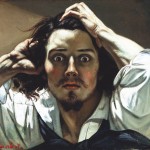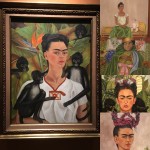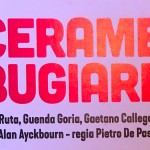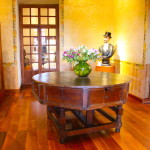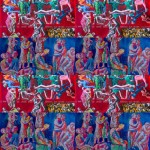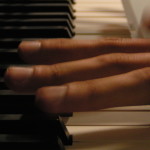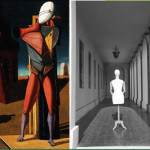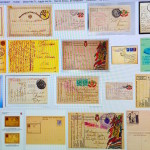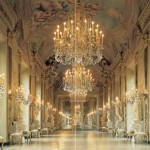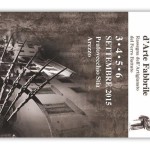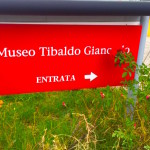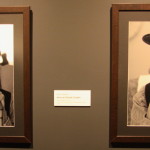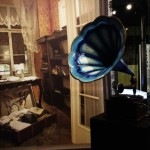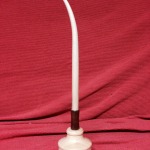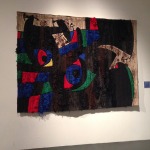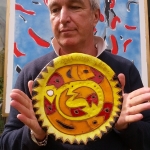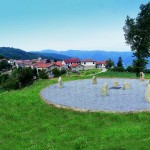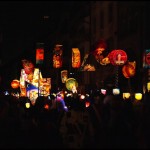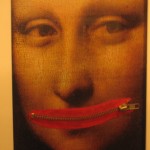“Finally I know Picasso better”. It is with this thought that one leaves the exhibition “Picasso the Foreigner” now at the Palazzo Reale until February 2, 2025.
The approximately eighty works (including paintings, sculptures, drawings, collages, photographs and prints), allow us to understand the harsh treatment that the artist received in France until 1944. In fact, in Paris, since the first time in 1901, the painter certainly did not enter through the main entrance, but through the service door, and he was able to extricate himself very well from all the various and long hostilities.
During the visit, it seems like you are walking with Picasso and breathing in the stigma that he encountered as a foreigner and a supposed anarchist. Each room, through documents and letters, masterfully tells a piece of that turbulent era, of that France shaken by political and social tensions, of that xenophobic atmosphere of which Picasso was a victim.
There are some particularly touching black and white films, such as the one in 1931 where Picasso and his wife Olga enjoy a happy moment surrounded by Bob the Pyrenean dog and Noisette the fox terrier. Or the one in which he is seen painting the famous Guernica, after the bombing of the Basque city of the same name by German Luftwaffe planes in 1937.
The real turning point came on October 4, 1944 when Picasso officially became a member of the French Communist Party; the news would end up on the front page of L’Humanitè, and he himself would explain: “I was in such a hurry to have a homeland again! I have always been an exile, now I am no longer”. From that moment on, after the countless climbs, Picasso finally began to descend.
A round of applause certainly goes to Annie Cohen-Solal, the scientific curator of the Exhibition, because it is thanks to her vision that visitors, when they leave, will have had the opportunity to better understand the man behind the artist and how complex the success achieved by Picasso was. And considering the era in which we live, full of violence and xenophobic extremism, the rereading of this part of Picasso’s life (he was marginalized for over six decades), with its splendid happy ending, gives hope to all of us.
🇮🇹“Finalmente conosco meglio Picasso”. È con questo pensiero che si esce dalla Mostra “Picasso lo Straniero” adesso in Palazzo Reale fino al 2 febbraio 2025.
Le circa ottanta opere (fra dipinti, sculture, disegni, collage, fotografie e stampe), permettono di capire il duro trattamento che l’artista ha ricevuto in Francia fino al 1944. Infatti a Parigi, sin dalla prima volta nel 1901, il pittore non è certamente entrato dall’ingresso principale, bensí dalla porta di servizio, e ha saputo districarsi molto bene tra tutte le varie e lunghe ostilità.
Durante la visita, pare di camminare assieme a Picasso e di respirare lo stigma che ha incontrato essendo straniero e supposto anarchico. Ogni sala, tramite documenti e lettere, racconta magistralmente un pezzo di quell’epoca turbolenta, di quella Francia sconvolta da tensioni politiche e sociali, di quella atmosfera xenofoba di cui Picasso è stato vittima.
Ci sono filmati in bianco e nero particolarmente toccanti, quali ad esempio quello dove nel 1931 con la moglie Olga, Picasso si gode un momento felice attorniato da Bob il cane dei Pirenei e da Noisette il fox terrier. Oppure quello in cui lo si vede dipingere il famoso Guernica, dopo il bombardamento nel 1937 dell’omonima città basca da parte degli aerei tedeschi della Luftwaffe.
La vera svolta arriva il 4 ottobre del 1944 quando Picasso diventa ufficialmente membro del Partito Comunista Francese; la notizia finirà in prima pagina su L’Humanitè, e lui stesso spiegherà: “Avevo talmente fretta di avere di nuovo una Patria! Sono sempre stato un esule, adesso non lo sono più”. Da quel momento in avanti dopo le innumerevoli salite, per Picasso iniziano finalmente le discese.
Un plauso va certamente ad Annie Cohen-Solal, la curatrice scientifica della Mostra, perché è grazie alla sua visione se i visitatori quando escono avranno avuto modo di capire meglio l’uomo che c’è dietro l’artista e quanto sia stato complesso il successo raggiunto da Picasso. E considerata l’epoca in cui viviamo, carica di violenza ed estremismi xenofobi, la rilettura di questa parte di vita di Picasso, emarginato per oltre sei decenni, con il suo splendido lieto fine, regala speranza a tutti noi.
🇪🇸“Por fin conozco mejor a Picasso”. Con este pensamiento se sale de la exposición “Picasso el extranjero”, que se exhibe en el Palacio Real hasta el 2 de febrero de 2025.
Las aproximadamente ochenta obras (entre pinturas, esculturas, dibujos, collages, fotografías y grabados) permiten comprender el duro trato que recibió el artista en Francia hasta 1944. De hecho, en París, desde la primera vez en 1901, el pintor no entró ciertamente por la entrada principal, sino por la puerta de servicio, y supo salir muy bien librado de todas las hostilidades, varias y largas.
Durante la visita, parece que se camina con Picasso y se respira el estigma que encontró como extranjero y supuesto anarquista. Cada sala, a través de documentos y cartas, cuenta magistralmente un trozo de esa época turbulenta, de esa Francia sacudida por tensiones políticas y sociales, de esa atmósfera xenófoba de la que Picasso fue víctima. Hay algunas películas en blanco y negro especialmente conmovedoras, como aquella de 1931 en la que Picasso y su mujer Olga disfrutan de un momento feliz rodeados de Bob, el perro de los Pirineos, y Noisette, el fox terrier. O aquella en la que se le ve pintando el famoso Guernica, tras el bombardeo de la ciudad vasca del mismo nombre por parte de los aviones de la Luftwaffe alemana en 1937.
El verdadero punto de inflexión llegó el 4 de octubre de 1944, cuando Picasso se convirtió oficialmente en miembro del Partido Comunista Francés; la noticia acabaría en portada de L’Humanitè, y él mismo explicaría: “¡Tenía tanta prisa por volver a tener una patria! Siempre he sido un exiliado, ahora ya no lo soy”. A partir de ese momento, tras las innumerables subidas, Picasso empezó por fin a descender. Sin duda, un aplauso para Annie Cohen-Solal, comisaria científica de la exposición, porque gracias a su visión, los visitantes, al salir, habrán tenido la oportunidad de comprender mejor al hombre que había detrás del artista y lo complejo que fue el éxito alcanzado. Y teniendo en cuenta la época en la que vivimos, llena de violencia y extremismo xenófobo, la relectura de esta parte de la vida de Picasso (marginado durante más de seis décadas), con su espléndido final feliz, nos da esperanza a todos.
Un rinnovato GRAZIE per il materiale a Marsilio Arte, e ad Annie Cohen-Solal, con la curatela speciale di Cécile Debray e la collaborazione di Sébastien Delot.




























